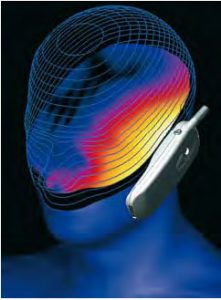
Image Credit: Dave Hogg
Since their inception, organized sports have been rife with the usage of Performance Enhancing Drugs (PED’s) known as “doping”. As science advances, those on the cutting edge will shape the frontier of professional athletics, and define the parameters of competition. At the forefront of PED technology is the idea of “gene doping”: Altering the expression of certain genes in order to improve athletic improvement. For fans and prospective athletes alike, the idea of seeing genetically supernatural competitors on the field may be unsettling.
A 2008 review published in the British Journal of Pharmacology seeks to assuage such concerns, claiming that there are “major technological hurdles” in converting results from laboratory rodents into successful human trials, beyond the limited number already performed. It suggests that gene doping is an issue that will not need to be dealt with for many years to come. The proposed reason for these delays lies, perhaps unsurprisingly, in the physiological differences between humans and mice.
For gene therapy, the basis of gene doping, “a delivery system (vector) is required to transfer the genetic material into the target cell” explains DJ Wells, author of the review. Viruses, adapted for transferring genetic material into cells, make excellent vectors. Removal of the viral genes and replacement with therapeutic genes neuters the virus’ dangerous effects. These vectors mix with “packaging plasmids”, so that they can be effectively administered to the subjects.
This is where the problems lie. Most of the noteworthy changes to physiology and performance seen in rodent trials are achieved with “germline genetic modification”, known as transgenesis. The procedure involves performing the modification in early embryonic stages, “before the germ cells have differentiated from the somatic cells”. Thus, the modification is present in all cells from thereon, and because the subject develops with the modification, it is able to adapt to it. For humans however, transgenesis is not yet possible, leaving somatic gene transfer as the only alternative. The somatic method is unlikely to disperse the modification throughout all of the body cells, and is likely to produce different results, given that the subject does not develop along with the change in gene expression. Given the size difference between humans and rodents, it is extremely difficult for humans to spread genetic modification over the entire body.
Nearly a decade later, and it would seem the article’s prediction is accurate: We’ve yet to see a genetically modified athlete anywhere in the realm of professional sports, and we might not for many years. Nonetheless, there could come a day where permanent alteration of one’s own genetic being becomes an affordable possibility. Will we turn our backs on science in the name of fair play? Or will our athletes take the leap to becoming superhuman?

Image Credit: Seattle Parks
- Arjun Thomson-Kahlon

 Every culture has unique alcoholic beverages. For example, in southeast Asia, venomous snakes are infused in rice wine to make snake wine, credit to
Every culture has unique alcoholic beverages. For example, in southeast Asia, venomous snakes are infused in rice wine to make snake wine, credit to  Ethanol metabolism, credit to
Ethanol metabolism, credit to 

